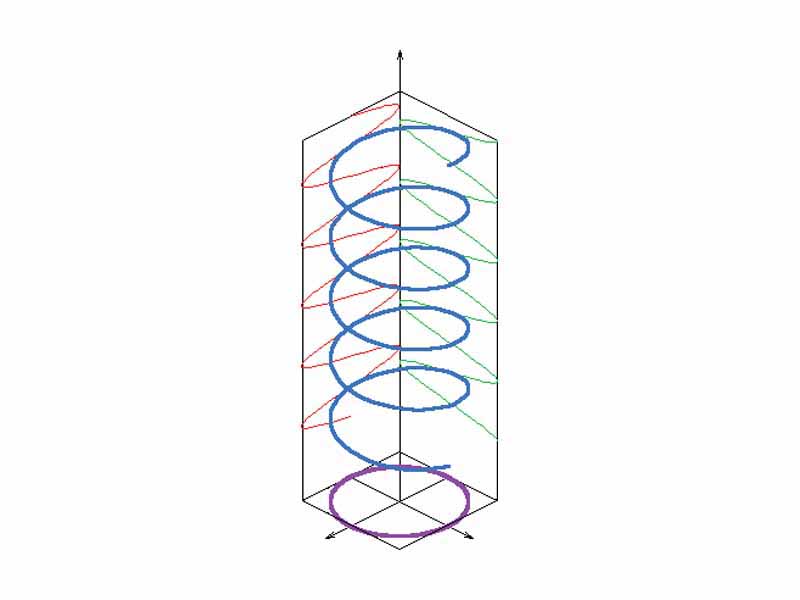The two orthogonal components have exactly the same amplitude and are exactly ninety degrees out of phase. In this case one component is zero when the other component is at maximum or minimum amplitude. There are two possible phase relationships that satisfy this requirement: the x component can be ninety degrees ahead of the y component or it can be ninety degrees behind the y component. In this special case the electric vector traces out a circle in the plane, so this special case is called circular polarization. The direction the field rotates in depends on which of the two phase relationships exists. These cases are called right-hand circular polarization and left-hand circular polarization, depending on which way the electric vector rotates.
Click this LINK to visit the original image and attribution information. Right click on the image to save the 800px teaching JPEG.
